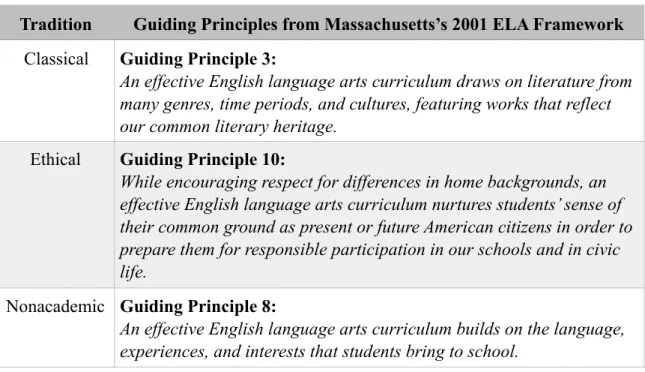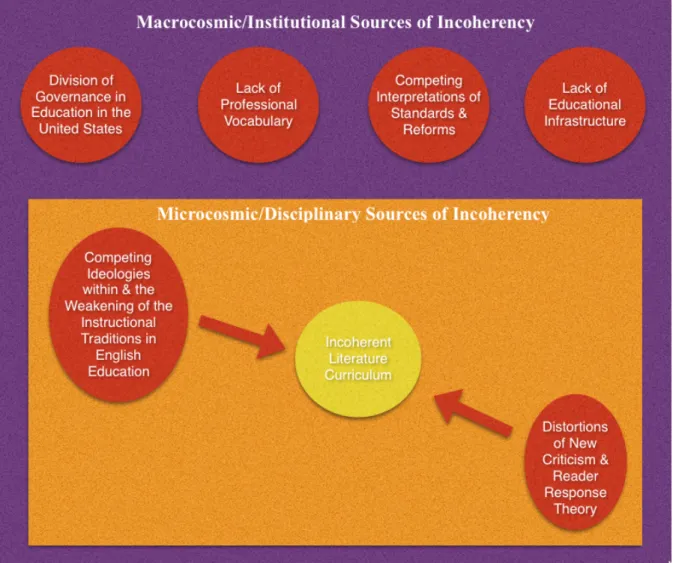However, a limited number may be read in class under the immediate direction of the teacher. Historians generally credit Horace Mann as the champion of the Common School (Tozer and Senese 60-75). APP's work would last eight years (and unfortunately be interrupted by the outbreak of World War II) and produce five volumes of research.
One of the reports conducted during the study is listed in the appendix of volume II, also titled Curriculum Exploration. Two other reformers contributed to the debate about the English curriculum during this period of academic revival. Conant asserted the importance of secondary education in his 1959 text The American High School Today which saw the institution as “the proper .
The exams themselves emphasize the "textual analysis and literary criticism on the model of the New Critics" and. In essence, the classicists ignored the pedagogical perspectives of scholars rooted in the ethical and non-academic traditions of teaching English. Arthur Applebee's text Tradition & Reform in the Teaching of English tells the history of the school subject up to the 1960s.
Conference." "Central to the British perspective," the authors write, "was an emphasis on personal growth" of the student (14).

Shortly before the publication of A Nation at Risk, NCTE commissioned a report on the status of the English curriculum of the time, from kindergarten to college. Student test results in 2005 were dismal, with only 51% of high school students tested on the ACT meeting the standard. As the evidence shows, the classical tradition of English, with its emphasis on complex, canonical texts and lecture preparation, had clearly declined from the early twentieth century.
Furthermore, the researchers went so far as to suggest that “the recovery rate for traditional freshmen…suggests that the changes in the content of the English curriculum may have reduced its academic value. In her text, Stotsky analyzes some of the causes of the weakening of the secondary literature curriculum, including her own historical assessment. She points out that the incoherence of the current literature curriculum is related to a devaluation and exclusion of literary knowledge – both of which are hallmarks of the classical tradition in English education and the Heritage curriculum model.
First, Stotsky points out flaws and inconsistencies created in the movement's narrowed goal of bringing more multicultural texts written by minority authors to the English classroom. Second, Stotsky criticizes the standards written by the National Council of the Teachers of English, citing them as a cause of incoherence in the high school literature curriculum. Before this question can be answered, more discussion of the current state of the ethical and non-academic traditions is needed.
As both Smagorinsky's and Anderson's research suggests, standardization of a curriculum (as opposed to thinking of the curriculum as a non-fixed entity) and high-stakes standardized tests conflict with progressive goals of the ethical and non-academic traditions of English education , where goals such as “literature appreciation” and “ethical To return to the language of the NEA reviewers, students are “connected” to each other, and more globally, the goals of reading literature for fun and pleasure are reflected in the current literature curriculum. Secondary School: Why Reading Fiction Matters in an Age of Scientific Objectivity and Standardization, tells about the ethical and non-academic traditions of today's English education.
To further substantiate her concerns about the declining importance of fiction in the English curriculum, Alsup cites a quote from influential English education scholar Judith Langer:. All of the above discussion has examined the sources of incoherence in the current secondary literature curriculum rooted in a historical understanding of English education. Moreover, "close reading," Perez continued in her presentation, "doesn't arrive at a precise interpretation"; in fact, "none of these critics ever argued for a single interpretation [of a text]," rather, the New Critics simply argued that "interpretation should be based on the formal elements of the text."
Appleman, Stotsky, and the authors of the 2010 National Survey of Literary Study in Grades 9, 10, and 11 share dissatisfaction with the current, common use of reader response in today's English classrooms, where the reader. There is really nothing in the recognition of the personal nature of literature that requires an acceptance of the notion that any evocation from a text is as good as any other.
EPILOGUE – FROM THEORY TO PRACTICE
France holds the record for the most Nobel Prize-winning authors in the world, and the country's literature standards have paved the way for a curriculum that celebrates France's literary genius. It wasn't hard to find an answer: In the most recent set of standards, reforms began primarily with the No Child Left Behind. For grades nine and ten, no specific study of American or British literature is mentioned in the ten standards, and for grades eleven and twelve Shakespeare is the only required author to be studied.
English teaching is strongest when it reflects and embodies all three of the major teaching traditions within the discipline. Arthur Applebee's Tradition & Reform in the Teaching of English - describes the emergence of English as a subject for its establishment as part of the secondary school. At the same time, my students considered the ethical issues surrounding politics and leadership in the novel and its parallels in our world today.
Through these activities, I was able to incorporate both ethical and non-academic traditions into the unit, which offered a strong range of content. Tradition & Reform: “Although the form of 'New English' may be unclear from. One can speculate about the influence of the life adjustment education movement on the history of literature for young people.
In contrast, many titles that appeared on college entrance exams in the late nineteenth century are at a high school level of readability, including David Copperfield, Gulliver's Travels, The House of the Seven Gables, Ivanhoe, The Last of the Mohicans, Pride & Prejudice, Silas Marner, and A Tale of Two Cities (Applebee 275-276). In a 2016 issue of The Chronicle of Review, he noted: “The promise of multiculturalism in the humanities was that it would produce a richer, more accurate sense of tradition and merit. But there is no evidence that students, for example, know more about African-American literature than they did during the time of the Dead White Male.
A case for teaching literature in the high school: Why reading fiction matters in the age of scientific objectivity. 34; Exploring the Island: Mapping the Shifting Sands in the Landscape of English Culture and Pedagogy in the Classroom." Changing English: Studies in Culture and Education, Vol. What has been the most significant change, positive or negative, in the last 50 years ?” The Chronicle Review, vol.

